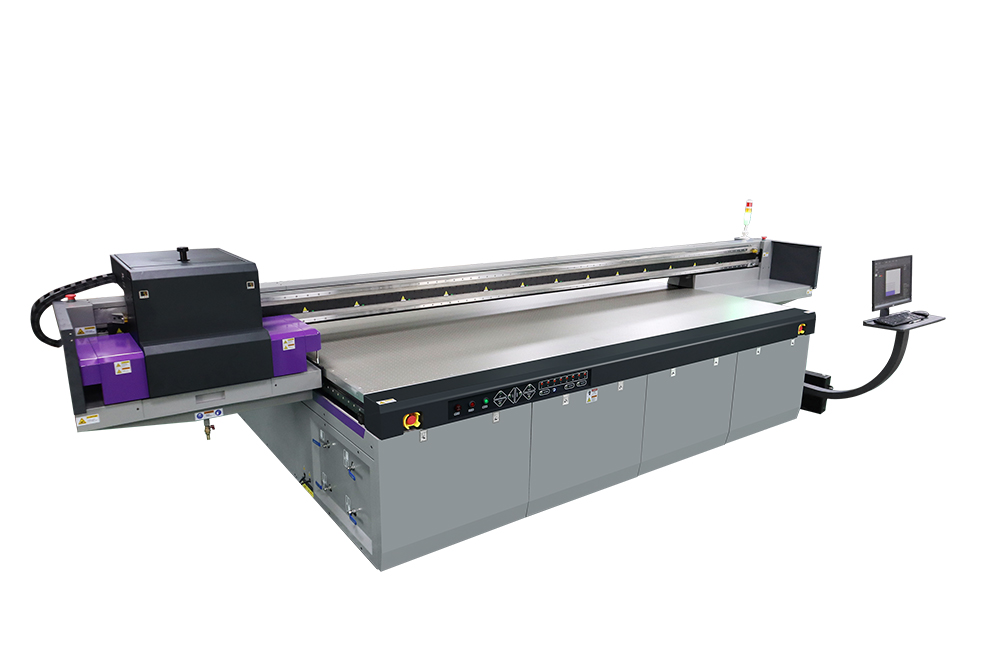UV Flatbed Printer: Common Problems and Solutions for Beginners
UV flatbed printers have revolutionized the printing industry by offering versatility, precision, and high-quality output on a wide range of materials. Whether you’re printing on glass, metal, plastic, or even wood, these printers can deliver stunning results. However, like any sophisticated piece of equipment, UV flatbed printers can encounter various issues, especially for beginners who might not be familiar with their operation and maintenance. In this article, we’ll explore some of the most common problems faced by novice users and provide practical solutions to overcome them.

1. Print Quality Issues
One of the most frequent complaints among beginners is poor print quality. This can manifest as blurry images, banding, or uneven color distribution. Several factors can contribute to these issues:
Ink Nozzle Clogs: Over time, ink can dry up in the nozzles, leading to clogs that affect the ink flow. To resolve this, perform regular nozzle cleaning cycles as recommended by the printer’s manual. Most UV flatbed printers come with built-in cleaning functions that use pressure or solvent to clear out any blockages.
Incorrect Print Settings: The resolution, ink density, and pass settings play a crucial role in print quality. Ensure that these settings are optimized for the type of material and the desired output. Consult the printer’s user guide or online resources for recommended settings for different materials.
Inadequate Material Preparation: The surface of the material you’re printing on must be clean, dry, and free of any contaminants. Dust, oil, or moisture can interfere with the ink adhesion, leading to poor print quality. Always prepare the surface properly before printing.
2. Ink-Related Problems
Ink is the lifeblood of any printer, and UV flatbed printers are no exception. Issues related to ink can significantly impact the printing process:
Ink Smudging: This occurs when the ink doesn’t dry properly on the material. It can be due to insufficient UV curing or using the wrong type of ink for the material. Ensure that the UV lamps are functioning correctly and that you’re using the appropriate ink for your application.
Ink Leakage: Leaks can occur due to faulty ink cartridges, loose connections, or damaged ink lines. Check all ink-related components for any signs of leakage and replace or repair them as necessary.
Ink Consumption: High ink consumption can be a concern, especially for beginners. This can be mitigated by optimizing print settings, using higher-quality materials that require less ink for proper adhesion, and regularly maintaining the printer to ensure efficient ink usage.
3. Printer Calibration Issues
Proper calibration is essential for achieving accurate prints. Misalignment can lead to distorted images and text:
X, Y, and Z Axis Calibration: Each axis must be precisely calibrated to ensure that the print head moves accurately across the material. Follow the calibration procedures outlined in the printer’s manual to adjust the axes.
Print Head Alignment: The print head must be aligned correctly to ensure that the ink is deposited in the right places. Most printers have an automatic alignment feature, but manual adjustments may be necessary in some cases.
Material Thickness Adjustment: Different materials have varying thicknesses, and the printer’s platform may need to be adjusted accordingly. Ensure that the platform is level and at the correct height for the material being printed.
4. Software and Connectivity Issues
UV flatbed printers rely on software to process and send print jobs. Software and connectivity problems can disrupt the printing process:
Driver Issues: Outdated or incompatible drivers can cause communication problems between the computer and the printer. Always use the latest drivers provided by the printer manufacturer.
File Format Compatibility: Ensure that the files you’re printing are in a format compatible with the printer’s software. Common formats include PDF, TIFF, and JPEG, but always check the printer’s specifications.
Network Connectivity: If your printer is networked, connectivity issues can arise due to network instability or incorrect settings. Check your network connections and configurations to ensure smooth communication.
5. Maintenance and Care
Regular maintenance is crucial for the longevity and performance of your UV flatbed printer:
Cleaning: Regularly clean the printer, including the print head, platform, and UV lamps. Use the recommended cleaning solutions and tools to avoid damaging the printer.
Inspection: Periodically inspect all components for any signs of wear or damage. Replace any worn-out parts promptly to prevent further issues.
Storage: When not in use, store the printer in a cool, dry place away from direct sunlight. This will help protect the printer from environmental damage.
6. Troubleshooting Tips
Here are some general troubleshooting tips for beginners:
Check the Manual: Always refer to the printer’s manual for specific troubleshooting steps and guidance.
Online Resources: Utilize online forums, tutorials, and support websites for additional help. Many printer manufacturers have dedicated support pages with FAQs and troubleshooting guides.
Contact Support: If you’re unable to resolve an issue on your own, don’t hesitate to contact the printer’s customer support. They can provide expert advice and assistance.
Conclusion
UV flatbed printers offer immense potential for creativity and versatility in printing. However, like any technology, they can present challenges, especially for beginners. By understanding the common problems and their solutions, you can ensure that your printer operates smoothly and delivers high-quality prints. Regular maintenance, proper material preparation, and attention to detail are key to achieving successful prints with your UV flatbed printer. As you gain experience, you’ll become more proficient at troubleshooting and optimizing your printer for the best possible results. Happy printing!
